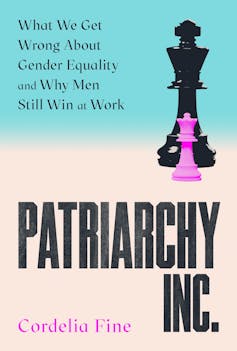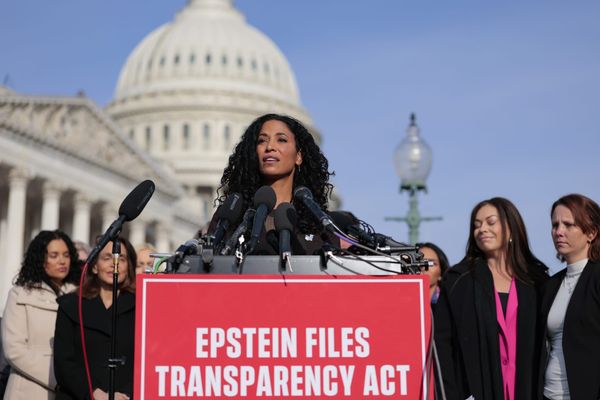
“When diversity, equity and inclusion become ‘threats’ to the order of society,” Judith Butler wrote recently, “progressive politics in general is held responsible for every social ill.” Authoritarians are empowered to oppress vulnerable people in the name of “the nation, the natural order, the family, society or civilization itself”.
The links between sacrificing diversity, equity and inclusion (DEI) and upholding patriarchal white supremacy are clear. This has prompted many to fight harder to preserve DEI.
If only existing DEI wasn’t so crap.
Review: Patriarchy Inc. – Cordelia Fine (Atlantic)
Cordelia Fine is critical of existing DEI policies and has some evidence-based suggestions for workplaces that actually want gender equity. The problem is, she suspects many workplaces are using aspects of DEI as a veneer.
The uselessness of most DEI measures – things like self-directed mandatory gender bias training, work-family flexibility measures that encourage women into career-limiting roles, and management targets that make a handful of women wealthy but widen the aggregate gender pay gap – may be a feature, not a bug, of the contemporary system.

Fine calls this system Patriarchy Inc. Thinking more historically than Fine tends to do (understandably enough – she is a philosopher and psychologist, not a historian), we can see how this happened.
It was a smallish step from women demanding financial independence, thus reducing their reliance on marriage, to their mass entry into the workforce. For corporations, women workers were cheaper. Their mass entry helped push down other working conditions, making profits higher.
The gender pay gap, in other words, makes women workers a good deal for corporations. The surge in productivity women enabled in the late 20th century cannot be sustained indefinitely, but perpetuating workplace inequalities is a way to stretch out the profits a bit longer.
This might be why workplaces focus on DEI measures that don’t work. They need women to join their workplace, so they want the positive public relations that DEI initiatives offer. But employers also expect, even unconsciously, that men will be “higher” achievers and therefore deserve the most loot.
Fine shows that, in many segments of the economy, men (including fathers) are pressured to work long hours. The same organisations, seeking to retain women, encourage mothers to take up work-family flexibility – something technically available to men, but discouraged in a hundred unspoken ways.
Everyone misses out: fathers have less time with children than they would like, while women are subject to a “motherhood wage penalty”. By working fewer hours, women enjoy fewer career rewards.
There are wider issues at stake too. Sustaining gender inequality is not only about having a relatively cheap workforce, but the contradictions at the heart of the labour economy.
At a systemic level, someone must do the work of social reproduction: bearing and raising children, keeping them healthy, teaching them the things that will make them useful people able to replace the current generation in the workforce as they age. While that labour is crucial to the economy, employers also want those people’s productive labour at work.
Patriarchy Inc. shows that DEI policies tend to be focused on resolving this fundamental contradiction. But not by reducing inequality. The gendering of occupational norms means the consequences are borne by working women, who face a “triple bind”. They are, observes Fine, “punished if they play by men’s rules, punished if they don’t” – and then, when they lose interest in a game where the dice are clearly loaded against them, career success itself is reinforced as “men’s terrain”.
“Fixing the women” by measures like encouraging us all to “lean in”, misses the fact that the system of rewards is built to “belong” to men.

Gendered jurisdictions
That doesn’t mean all professional work is coded male. Women also have occupational spaces to which they “belong” – though these usually contribute to, rather than resolve, gender inequality.
Fine is interested in the question of gendered jurisdictions and women’s cheap labour, issues I have been exploring with Claire E.F. Wright and other colleagues for a forthcoming issue of Women’s History Review. But Fine takes quite a different approach. She concentrates on the evolution of sex-segregated work.
Divisions of labour can be productive, Fine says, even gendered ones. But she also shows that the long-term evidence across multiple cultures for the gendering of work produces such a jumble that it is hard to see labour preferences that are universally or biologically “natural” to women or men.
Even so, she still thinks there might be a place for examining gendered attributes from an evolutionary perspective.
Conceding biological aspects of gender matters in the present moment. The subject of the Judith Butler essay quoted above is the US president’s recent executive order insisting on the physical naturalness of “true” gender. This insistence is part of a wider logic that maintains women and men have distinctive talents.
Such claims have been a frequent source of misogyny. “Subscribing to evolutionary psychologists’ view on sex differences,” Fine says, “does seem to be rather strongly correlated with overconfidence and casualness when it comes to the standards of evidence acceptable for inferring that the divisions of labour that maintain men’s higher status and power have biological roots.”
Fine thinks we need to examine this anyway. Understanding the sources of gender inequality at work requires closer study of the question of “natural” distinctions, she suggests, if only to challenge the “equal but different” narrative that infuses many workplaces and perpetuates the gender pay gap.

Workplace norms within organisations and across the economy are often based on the “gender coding of occupations” (think “computer geek”, for example). Fine suggests these have indeed evolved, though she presents evidence to suggest that the evolution of sex-segregated work habits has cultural rather than physical origins.
Distinctions between what men and women typically do are still often worn on human bodies. A labourer’s muscular body seems to be an expression of their gender, for example. The same might be said for a care worker’s heart. This blurs the old-fashioned distinction between physical (environmental) evolution and cultural or ideological evolution.
This is a key contribution of Fine’s research, though it is something she might have better explained. She acknowledges, in a similar way to Butler, that sex is indeed physical. It is embodied and the inheritor of a lot of stuff, including some that is evolutionary. But this does not make its categories immutable.
Women’s bodies do not explain systemic workforce inequality. Patriarchy Inc. demonstrates that the inequality is a result of policies, written and unwritten, within workplaces and across the economy. Rather than leading us to expect that women will always be “naturally” better at low-paid, low-status work, Fine allows us to see the connection between a gendered division of labour and culturally embedded economic norms.
Remaking gender at work
“Every occupation has its own gender-coding history,” Fine explains. When women entered the workforce in large numbers they were not “equals to men”, but were incorporated “as women”. The jurisdictions over which women held authority were in turn, like magic, deemed to have lower status, power and wages.
Obviously, it isn’t actually magic. And it can be fixed. “Digging Patriarchy Inc. out of the division of labour requires careful thought and deep reform,” Fine concludes – “instead, we have DEI”.
Everyone not wearing a MAGA hat surely wants to keep diversity, equity and inclusion in principle. But it is not clear that corporations are all that keen on making DEI effective. After all, cheap women and hyper-industrious men (on the whole – occasionally, this is reversed) underpin their productivity.
But while effective DEI may not be in some employers’ short-term interests, actual gender equity is good for everyone. That means, Fine argues, it is also good for the economy.
Fine’s perspective requires a shift in definition of “the economy” away from “market thinking” towards “relational thinking”. I have enormous sympathy for this position, which re-imagines the economy as “for us” and work that supports wellbeing.
But it is magical thinking to suggest new economic language alone will liberate capitalist workplaces from the logic of extracting profit from the difference between the price of labour and the value of its outputs. The deep work of addressing occupational gender inequalities needs more material levers than Fine has suggested.
In some fields, the shift is materially necessary. Fine describes what sounds like an excellent reordering of gender norms on remote oil rigs, where hyper-masculine hierarchies were producing unsafe and therefore inefficient workplaces. In finance, similar hierarchies (but different pressures) produce career trajectories based on a woman’s “fuckability quotient” and infuse workplaces with sexual violence.
Neither are good for business, or for women, so the hard work of reworking gender norms is surely worth the investment.
Perhaps this logic can be extended to the kinds of regulations, working conditions and bonus reforms that Fine shows would more effectively close the gender pay gap. But it is hard to see how a “new vision”, inspiring though it is, will encourage employers to stop using DEI as recruitment publicity and genuinely prioritise human wellbeing over productivity.
Fine argues that “we” need to be asking questions of employers who claim to promote DEI, but only via ineffective practices. This is excellent, though it still does not offer the material levers that change will require.
We also need to ask governments why welfare applies to business more than it does to humans. And we need activism that is more industrially derived if we are ever to effectively attain gender equity. Thus, I want to add something that Fine curiously does not say: if you care about DEI, join your union.
Hannah Forsyth is affiliated with Jobs and Skills Australia.
This article was originally published on The Conversation. Read the original article.







